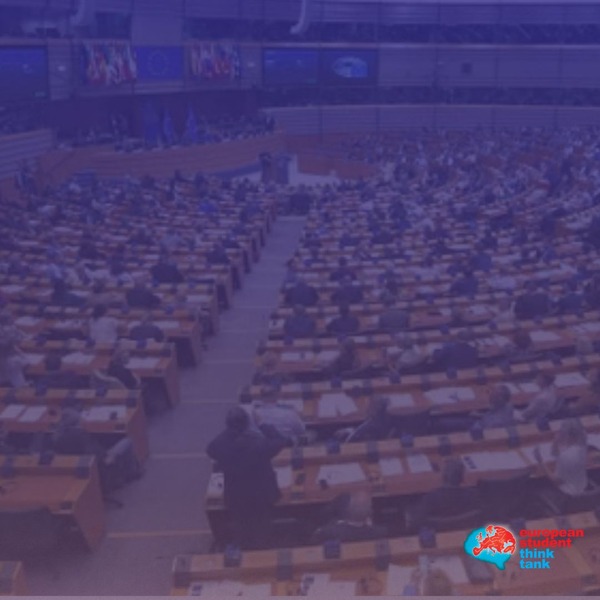
Written by: Michele Curzi
Edited by: Luca Saviolo & Martina Canesi
Introduction
In June 2022, the European Union (EU) adopted a policy document for “A Strategic Partnership with the Gulf”, drafted to direct and coordinate multilateral relations between the EU and the countries of the Gulf Cooperation Council (GCC): Saudi Arabia, the United Arab Emirates, Qatar, Oman, Kuwait, and Bahrain. The new Strategic Partnership is the latest of various attempts to strengthen relations over the past three decades, as the development of a comprehensive policy framework for the GCC has so far eluded the Union’s foreign agenda. Despite significant shared interests in a wide range of areas, namely economy, energy, and security; the potential for cooperation between the two regional organisations has remained largely unfulfilled and the slow pace of EU-GCC relations can be attributed to multiple factors, both internal and external.
Reviewing the history of relations between the EU and the GCC allows us to trace the recurring patterns and the determining factors that have prevented cooperation from achieving its full potential.
- The Evolution of EU-GCC Relations from 1989 to the Arab Spring
Throughout the Cold War, engagement between Europe and the Arabian Peninsula was negligible, except for the United Kingdom’s colonial ties to the Gulf. However, after the 1973 Oil Crisis and its impact on energy supply chains, the economic interdependence between Europe and the Gulf, and the latter’s strategic importance, became apparent.
Following the creation of the Gulf Cooperation Council (GCC) in 1981, and the parallel advancement of the process of European integration, the foundation for the development of “bloc-to-bloc” relations between the two organisations was laid. In 1989, the European Community and the GCC signed a Cooperation Agreement (CA), meant to be the first comprehensive framework for multilateral cooperation. Comprehensively indeed, the CA identified three key objectives: establishing an institutional framework for relations, broadening and deepening cooperation, and supporting the economic diversification of Gulf Countries.
Beyond the general objectives, the agreement listed a wide range of areas of cooperation, but it lacked specificity and actionable points (Colombo, 2014). In fact, the only concrete goals are set for the economic dimension of cooperation, which is significantly preponderant and focuses on trade and investment, stating the parties’ intention to establish a Free Trade Agreement (FTA) between the two regions. This notwithstanding, an agreement has not been reached across the multiple rounds of FTA negotiations over the past three decades which have marked the ups and downs of EU-GCC relations.
Despite lacking tangible goals, the main contribution of the CA was the establishment of the Joint Council (JC) and its complementary Joint Cooperation Committees (JCC), whose mandate is to define pragmatic goals and steps towards their achievement through recommendations that are binding to both parties. To this day, the JC and JCC are core working bodies of the EU-GCC multilateral cooperation framework. The 1989 Agreement set the blueprint for all future multilateral initiatives, which would either attempt to revive it through renewed momentum or build on its format and contents to develop more specific roadmaps to cooperation. Most importantly, the CA reflects the underlying interest both parties had in cooperation: a primarily economic opportunity, important because “mutually advantageous”, which highlights the contractual, rather than strategic nature of relations.
In fact, as the FTA negotiations moored because of disagreements over its terms, frustration between the two parties began to grow, leading to a series of ministerial meetings in 1995 to overcome the impasse. Between the 1990s and the 2000s, the European Communities were adopting the founding agreements that would establish the European Union and developing common foreign policy principles and tools, such as political conditionality, leveraging economic and soft power to influence neighbouring countries, and normativity, setting core values such as the promotion of democratization and human rights to guide the Union’s external action. Simultaneously, the Barcelona process was launched 1995, which culminated in the Euro-Med partnership, aimed at fostering cooperation between Europe and its Mediterranean neighbours. In 2004, the European Neighbourhood Policy (ENP) was launched, a more organic policy to coordinate engagement with the Union’s Southern and Eastern neighbourhoods. However, the Gulf was not included in these formats, because of geographical reasons but also due to the low priority it had in the newborn Union’s foreign policy agenda.
Moreover, the 9/11 terrorist attacks, Washington’s response and its ripple effects throughout the region, namely the disastrous backdrop of the 2003 invasion of Iraq, drove a wedge between the GCC monarchies and the US. In this context, as security interests became more prominent in the EU’s approach to the Middle East, the importance of strategic cooperation was acknowledged during the 2004 JC meeting. In the same year, the Union adopted a “EU Strategic Partnership with the Mediterranean and the Middle East” which included and set a separate specific agenda for the latter (Koch, 2014). Despite these initiatives, there was no significant progress in the implementation of the CA and the advancement of multilateral cooperation. Concurrently, FTA negotiations continued. The EU had requested the GCC to establish a customs union as a prerequisite, which was achieved in 2003. This notwithstanding, disagreements endured, especially concerning the petrochemical sector, causing mistrust and frustration and ultimately leading to the GCC’s unilateral withdrawal from negotiations in 2008, which marked the failure of the CA (Ibid.).
In these years, EU-GCC relations did not gain much academic attention, but some scholars sought to explain the prolonged lack of progress. Nonneman (2006) claimed that the diverging and competing interests among the member states of both organisations prevented bloc-to-bloc cooperation, as neither the EU nor the GCC had a shared strategic vision for this partnership. Conversely, Youngs (2006) emphasised how European policies tend to be symbolic rather than pragmatic, and lack concrete follow up and implementation, observing that the tools and principles of EU foreign policy towards the Middle East – namely political conditionality and normativity – proved ineffective with the rich, authoritarian, and conservative GCC states. Additionally, scholars noted that the ambiguity caused by competing multilateral and bilateral level engagement damaged the EU’s coherence and credibility in the Gulf (Baabood, 2007). These limitations proved endemic and would continue to affect relations and hamper cooperation between the two regions.
- A turbulent decade: the JAP, the Arab Spring and the Qatar Diplomatic Crisis
Although negotiations had ultimately faltered, an unexpected development reapproached the Union and the Council: the Eurozone debt crisis in 2009. In fact, investments from the GCC into European economies helped substantially, showcasing potential of cooperation and kickstarting new negotiations (Colombo, 2021). The economic dimension was once again the main driving factor of EU-GCC relations.
Subsequently, the Joint Action Programme (JAP) for 2010-13 was adopted following the 2010 JC meeting. The JAP, designed to guide the implementation of the CA, was pragmatic and outlined concrete steps to be achieved. In fact, the plan established ad-hoc groups of experts, to provide the JC with technical insights, and introduced the concept of “decentralized horizontal cooperation”, to foster organic engagement between the two organizations’ private sectors and civil societies. Overall, it was a major step towards the “institutionalization” of relations, establishing an institutional framework that could guide the pursuit of EU-GCC cooperation in different areas (Lenos, 2013). However, the JAP was limited by the lack of high-level involvement by the two parties, delegating its work to minor technical bodies rather than actual decision makers (Colombo, 2021).
Additionally, despite the ever-going talks, the EU and the GCC were still unable to agree on an FTA, this time mainly due to the EU’s insistence on the inclusion of a human rights clause in the agreement (Koch, 2014). As a result, the action plan was not renewed in 2013. The JAP’s failure showcases that, even with a more detailed and operable cooperation framework, both sides wouldn’t commit the political capital and follow-up necessary for its implementation (Lenos, 2013), as well as the extent to which external factors and the predominant importance of the economic dimension affect multilateral engagement.
Indeed, in those years, rapidly succeeding geopolitical developments drove the EU and the GCC apart, thwarting progress on the multilateral level. The Arab Spring exposed that the EU and the GCC held opposing strategic positions: while the EU sided with the protest movements, even as they strived for regime change, pursuing the opportunity to break through the systemic authoritarianism of the Arab World, the GCC saw the events as a threat to regional stability and their own regime security, supporting Islamist or reactionary factions (Colombo, 2014). The scope of shared strategic interests narrowed drastically, to the point that the 2014 JC meeting was cancelled, as the GCC was frustrated by the Union’s stance on the events (Koch, 2014).
Concurrently, in 2015 the EU, the US, and Iran signed the Joint Comprehensive Plan of Action (JCPOA) that addressed Tehran’s nuclear program. The agreement came at a time of heightened tensions between the two shores of the Persian Gulf. Although the EU and GCC initially shared concerns about Iran’s nuclear program, the JCPOA exposed a divergence in their strategies, leading to new points of contention with many Gulf States. (Nonneman, 2020). Moreover, the JCPOA sidelined the GCC in the eyes of European policymakers, as rather than attempting an impossible balance between Iran and the Gulf, the EU prioritized the breakthrough agreement.
As the backdrop of the Arab Spring changed the region, GCC states adopted increasingly assertive foreign policies to further their interests. Consequently, underlying fractures within the GCC emerged, as KSA and the UAE would primarily support secular authoritarian factions, while Qatar backed Islamist groups, particularly those connected to the Muslim Brotherhood. This fragmentation made multilateral engagement impossible, and fostered EU-GCC and intra-GCC competition in theatres, such as Syria, Libya and Egypt (Colombo, 2014). Meanwhile, the rise of populism and euroscepticism throughout Europe undermined the EU’s foundations, culminating in Brexit in 2016. The unprecedented inner divisions shifted the Union’s attention internally and impeded its foreign efforts.
In 2015, Saudi Arabia led intervention in the Yemeni Civil War, which proved a major miscalculation, as Riyadh, and its main ally the UAE, found themselves mired in a stagnating conflict that resulted in a tragic humanitarian crisis, as well as a reputational disaster. In fact, the European public opinion’s strong backlash pressured governments to stop arms sales to the Gulf. Furthermore, the Gulf’s image in Europe was further damaged by a string of diplomatic crises: Saudi de-facto leader Mohammed Bin Salman made the headlines for detaining Lebanese PM Hariri in Riyadh in 2017 and the murder of Jamal Khashoggi in Istanbul in 2018, while the UAE controversially arrested British PhD student Matthew Hedges for months the same year. Subsequently, the GCC states became extremely unpopular in Europe and relations with them toxic for European leaders. Conversely, the EU’s condemnations of these events were perceived as unwarranted interference by the Gulf, further alienating the two parties.
Finally, the last but most critical event was the 2017 Qatar Diplomatic Crisis, when simmering tensions between Saudi Arabia and Qatar split the GCC apart and almost escalated militarily. The Quartet, composed by Saudi Arabia, the UAE, Egypt, and Bahrain severed relations with Qatar and imposed a blockade to pressure Doha to cut ties with Iran and shut down its state-owned media. The crisis lasted until 2021 and, although Qatar endured the blockade, the GCC was unable to function as an organization, impeding any possible multilateral initiative with the EU (Nonneman, 2020). The Union did not pick a side but rather remained on the sidelines as the crisis unfolded, showcasing how little influence it had in the Gulf.
Throughout the decade, a ceaseless series of unfavourable developments pushed the EU and the GCC apart and made multilateral engagement impossible. Nonetheless, new opportunities for cooperation emerged: as GCC countries developed ambitious national plans, like Saudi Arabia’s Vision 2030, to forward economic diversification and the green and technological transitions in the Gulf. The EU was an ideal partner for these projects and, even though the Union could not capitalise on this opportunity, individual member states took the initiative to reap the benefits of cooperation individually, at times even in competition with each other (Colombo, 2021). This marks the rise of bilateral relations between European and Gulf states, which were always more developed than their multilateral counterparts, but became heavily preponderant. In fact, both parties found it easier to negotiate without the Union’s cumbersome bureaucracy and the Council’s loose and at times dysfunctional organisational structure.
Notably, the European External Action Service (EEAS) took some initiatives to keep multilateral engagement and dialogue alive, by opening new EU diplomatic missions in the GCC and launching issue-specific forums like the “EU-GCC trade investment dialogue” in 2017, the “Economic Diversification Dialogue” in 2019, and the “Enhanced EU-GCC political dialogue, cooperation and outreach”. However, less than a decade after the JAP, relations had shifted from an ambitious, yet concrete and mutually negotiated implementation plan for multilateral cooperation to a stall, where only bilateral relations proliferated, unbound by a comprehensive vision for the two regions.
In this context, scholars found renewed interest in the ups and downs of cooperation between Europe and the Gulf as, after repeated failures, they sought to explain these shortcomings. Colombo (2014) underscores that the prioritization of economic interests left political cooperation underdeveloped which, in addition to negligible people-to-people relations, cultural and academic exchange, prevented the EU from exercising its characterizing soft power in the Arabian Peninsula. Additionally, it became once again apparent that the one-fits-all model of political conditionality was tone deaf to the uniqueness of the Gulf, and scholars argued that, in an increasingly heterogeneous Middle East after the Arab Spring, a differentiated policy approach for the GCC was necessary (Demmelhuber and Kaunert, 2014). According to Nonneman (2020), the ineffectiveness of European efforts was rooted in their inability to keep up with regional and global geopolitical developments, which was further exacerbated by the internal divisions both the EU and the GCC were experiencing. Finally, Ghaafar and Colombo (2021) identified three key structural limitations: the format, referring to the predominance of bilateralism over multilateral engagement, the content, due to the high prioritization of economic interests, and the actors, as people-to-people relations remained neglected. In conclusion, the same obstacles to EU-GCC cooperation had persisted since the 1989 CA, as both sides were unable or unwilling to address them. Most academic literature argued in favour of, or hinted at, a comprehensive, coherent, and proactive EU policy for the GCC, as the way to break the impasse and get cooperation back on track.
- The 2022 strategic partnership: Old and New Challenges
In 2021 the Qatar Crisis ended with the signing of the Al-Ula Agreement by Gulf Countries, brokered by Kuwait and the US, which restored diplomatic ties. By the end of the year, the EU began consultations with the reunited GCC to draft a new policy for multilateral cooperation. As a result of these meetings, a Joint Action Plan for 2022-2027 – an updated version of the previous JAP – was adopted. Meanwhile, the EEAS had prepared a more robust and detailed document to integrate the new JAP, which would provide an in-depth guideline for its implementation: the “Strategic Partnership with the Gulf” was adopted by the Union in June 2022. The Strategic Partnership (SP) identifies six wider areas of cooperation, providing long-term goals and short-term objectives for each. After almost three years since its launch, it is useful to evaluate the SP in consideration of the tangible progress the two parties achieved.
Firstly, regarding economic cooperation, the SP proposes reopening FTA negotiations, as the prospect of such an agreement is as attractive as ever but, although tentative talks have started, there was no official statement. Concretely, in May 2024 the first EU-GCC Chamber of Commerce in the GCC was opened in Riyadh to facilitate interaction between private sectors. In the area of infrastructure and connectivity, a significant step was taken by launching, along with the US and India, the Indo-Mediterranean Economic Corridor IMEC, launched in 2023 an ambitious megaproject that could become the centrepiece of EU-GCC cooperation. Moreover, the EU stated its commitment to contribute to the Gulf’s green transition plans, and accordingly, the EU-GCC Green Transition Project was launched in April 2024. At the same time, the SP recognizes the GCC as a critical supplier of fossil fuels that can support the REPowerEU plan and stabilize energy prices, thus member states have been increasing their LNG imports through bilateral agreements (ECFR, 2022). Another promising area of cooperation is the development of infrastructure to produce green hydrogen in the Gulf and its export towards Europe. Nonetheless, multilateral progress has been slow, and bilateral initiatives might take the lead (Gonultas, 2025).
The Strategic Partnership also focuses on regional stability and global security, as European and the Gulf states commit to expand exchange between their militaries to tackle multiple shared challenges like terrorism, radicalization, and hybrid warfare. Additionally, the Union aims to increase its maritime presence by expanding the existing Atalanta and EMASoH mission and, most notably, with the launch in 2023 of operation ASPIDES in 2023. The mission addresses threats to trade in the Red Sea, the EU successfully provided a solution the GCC prefers to the more aggressive US-UK led operation Prosperity Guardian (Bianco and Rasinato, 2024).
To remedy the longstanding absence of people-to-people exchange between the EU and the GCC, the SP envisions a liberalised visa policy for all GCC states, which was realized in 2024, facilitating access and extension. Furthermore, both sides have been working to increase academic and cultural exchange, for example by including Gulf institutions in Erasmus+ projects, as well as the EU launching multiple cultural projects in the Gulf through its diplomatic representations in the region.
Finally, the SP aims to enhance institutional relations fostering mutual understanding and bridging structural differences between the two organizations. For this purpose, the Union’s diplomatic footprint in the GCC was expanded with a delegation to Qatar and the nomination of a Special Representative for the Gulf in 2023. Moreover, high-level meetings were intensified, a dozen took place since 2022, and visits from Gulf officials to EU institutions to learn their functioning. Finally, the first ever EU-GCC summit in 2024, with most country leaders present, was a significant achievement.
It is important to highlight that the renewed momentum and unprecedented commitment to EU-GCC relations is, at least, partially due to favourable and geopolitical conditions: firstly, Russia’s invasion of Ukraine prompted the EU to prioritize the diversification of its energy imports, putting the GCC at the top of its foreign policy agenda. Moreover, the GCC acknowledges Europe’s importance in forwarding its plans for economic diversification and green transition, and that more can be achieved at the multilateral level. Other developments had mixed impacts on EU-GCC cooperation, namely the War in Gaza and the ensuing regional instability, especially in the Red Sea, have highlighted shared strategic interests and the importance of jointly addressing them, while also causing frustration because of the differing stances of the two parties on the conflict and humanitarian crisis. At the same time, certain events have hampered cooperation, such as the Qatargate Scandal which, a few months after the SP, prompted the Union to postpone projects because of lingering mistrust.
- Conclusion
In conclusion, reviewing the factors that hindered EU-GCC cooperation, as they were defined by scholars who focused on the subject over the past three decades, it becomes apparent that, although the two organizations have moved past some aforementioned issues, longstanding limitations continue to hinder cooperation. The Union’s new policy moves past the paradigms of conditionality and normativity, which proved ineffective in the Gulf, and has gained the momentum and commitment that previously lacked from both sides. Additionally, the predominance of economic interests, which made cooperation transactional and non-strategic, was compensated by the inclusion of energy, security, culture and other areas. Meaningful progress was also made in addressing the institutional differences between the two organizations and the lack of high-level engagement. However, the distinction between the Union’s engagement and its member states’ individual initiatives remains blurred and, although the new policy has brought coherence, the multilateral and bilateral levels are still far from operating in synergy.
Finally, the key issue is that, although circumstances have been favourable so far, the EU-GCC partnership is still vulnerable to external factors and events. The backdrop of the War in Gaza has exhausted relations between the West and the Arab world and, as a result, the planning and implementation of the IMEC have been indefinitely delayed, thus jeopardizing the pivotal project. Moreover, the new Trump administration is a wild card that will have unforeseeable effects on the strategic environment of the Middle East, while its first foreign initiatives aren’t promising and have already antagonized the EU.
The situation begs the question of whether EU-GCC cooperation will weather the incoming storm, which one can hardly feel optimistic about. However, the key question that should be discussed by the organizations’ leaders is whether the success of EU-GCC cooperation should continue to depend on the shifts of an increasingly multipolar and unstable geopolitical landscape, or should it find its footing and actively shape the regional and global environment.
Bibliography:
Baabood, A. (2007). Reinforcing Ambivalence: The Interaction of Gulf States and the European Union. European Foreign Affairs Review, 12(Issue 4), 537–554. https://doi.org/10.54648/eerr2007044
Barlucchi, P. (2024). From Atalanta to Aspides: Old and New Challenges for EU Maritime Operations. Istituto Affari Internazionali (IAI), 24, 1–6. https://doi.org/2532-6570
Behr, T., & van Genugten, S. (2022, June 1). Can a new EU strategy bring EU and Gulf actors closer together? Middle East Institute. https://www.mei.edu/publications/can-new-eu-strategy-bring-eu-and-gulf-actors-closer-together
Bianco, C. (2023a, June 16). Renewable relations: A strategic approach to European energy cooperation with the Gulf states. ECFR; European Council on Foreign Relations. https://ecfr.eu/publication/renewable-relations-a-strategic-approach-to-european-energy-cooperation-with-the-gulf-states/
Bianco, C. (2023b). The EU’s Strategic Partnership with the Gulf: One Year On | Cinzia The EU’s Strategic Partnership with the Gulf: One Year On. In Brussels International Center. https://www.bic-rhr.com/research/eus-strategic-partnership-gulf-one-year
Bianco, C., & Barnes-Dacey, J. (2023, September 15). Intersections of influence: IMEC and Europe’s role in a multipolar Middle East. ECFR. https://ecfr.eu/article/intersections-of-influence-imec-and-europes-role-in-a-multipolar-middle-east/
Bianco, C., & Rasinato, E. (2024, May 27). Taking Stock of “Aspides”: A Step Forward in Europe’s Geopolitical Role in the Red Sea? Bruxelles International Center (BIC-RHR). https://www.bic-rhr.com/research/taking-stock-aspides-step-forward-europes-geopolitical-role-red-sea
Bianco, C., & Sons, S. (2021). Domestic Economic Plans and Visions and Opportunities for Cooperation with Europe. Contemporary Gulf Studies, 79–104. https://doi.org/10.1007/978-981-16-0279-5_5
Colombo, S. (2014). Bridging the Gulf: EU-GCC relations at a crossroads. Edizioni Nuova Cultura.
Cornwell, A. (2024, March 21). Exclusive: UAE seeks bilateral EU trade talks with GCC negotiations at impasse. Reuters.
Demmelhuber, T., & Kaunert, C. (2014). The EU and the Gulf monarchies: normative power Europe in search of a strategy for engagement. Cambridge Review of International Affairs, 27(3), 574–592. https://doi.org/10.1080/09557571.2013.855168
ECFR Comms. (2022, November 23). EU Energy Deals Tracker. ECFR; European Council on Foreign Relations (ECFR). https://ecfr.eu/special/energy-deals-tracker
Edwards, G., Baabood, A., & Galeeva, D. (2021). Post-Brexit Europe and UK : policy challenges towards Iran and the GCC states. Palgrave Macmillan.
Ghafar, A. A., & Colombo, S. (2021). The European Union and the Gulf Cooperation Council : towards a new path. Palgrave Macmillan.
Gonultas, B. (2025). Saudi Arabia inks deal with Germany to export green hydrogen to Europe. Aa.com.tr. https://www.aa.com.tr/en/economy/saudi-arabia-inks-deal-with-germany-to-export-green-hydrogen-to-europe/3471108
Koch, Christian (2014) Constructing a viable EU-GCC partnership. Kuwait Programme on Development, Governance and Globalisation in the Gulf States (34). London School of Economics and Political Science, London, UK
Lenos, A. (2013). EU-GCC relationship: Towards “strategic partnership” [PhD Thesis]. https://wrap.warwick.ac.uk/59738/
Nonneman, Gerd. (2004). Analysing Middle Eastern foreign policies : the relationship with Europe. Frank Cass.
Nonneman, G. (2006). EU‐GCC Relations: Dynamics, patterns and perspectives. The International Spectator, 41(3), 59–74. https://doi.org/10.1080/03932720608459428
Nonneman, G. (2020). European Policies Towards the Gulf: Patterns, Dynamics, Evolution, and the case of the Qatar Blockade. Journal of Arabian Studies, 10(2), 278–304. https://doi.org/10.1080/21534764.2020.1883575
Sons, S. (2024). The EU-GCC Summit: Late, But Not Too Late. In Brussels International Center, https://www.bic-rhr.com/research/eu-gcc-summit-late-not-too-late
van Veen, E. (2022, July 4). What bridges the Gulf and the European Union? Clingendael. https://www.clingendael.org/publication/what-bridges-gulf-and-european-union
Youngs, R. (2006). Europe and the Middle East: in the shadow of September 11. Boulder : Lynne Rienner Publishers.
Youngs, R., & Echagüe, A. (2007). Europe and the Gulf: Strategic Neglect. Studia Diplomatica, 60(1), 29–41. https://www.jstor.org/stable/44839081

 The ’Ndrangheta’s Infiltration and Threat to European Institutions
The ’Ndrangheta’s Infiltration and Threat to European Institutions  From Paper to Practice: How Grassroots Norms Undermine Gender Rights in Pakistan
From Paper to Practice: How Grassroots Norms Undermine Gender Rights in Pakistan  Exploited Childhoods: The Role of Global Corporations in Perpetuating and Mitigating Child Labour
Exploited Childhoods: The Role of Global Corporations in Perpetuating and Mitigating Child Labour  Human Rights Challenges in Addressing SLAPPs in Media, NGOs and Journalism in the EU
Human Rights Challenges in Addressing SLAPPs in Media, NGOs and Journalism in the EU 


